KVT – Walled Up

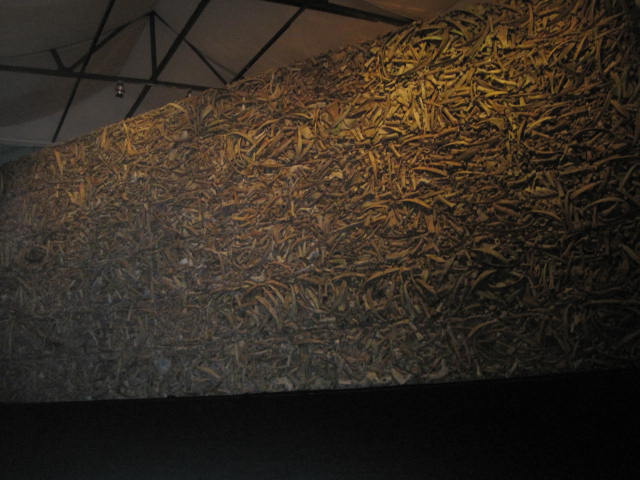
KVT pays homage to THE WALL and its creator
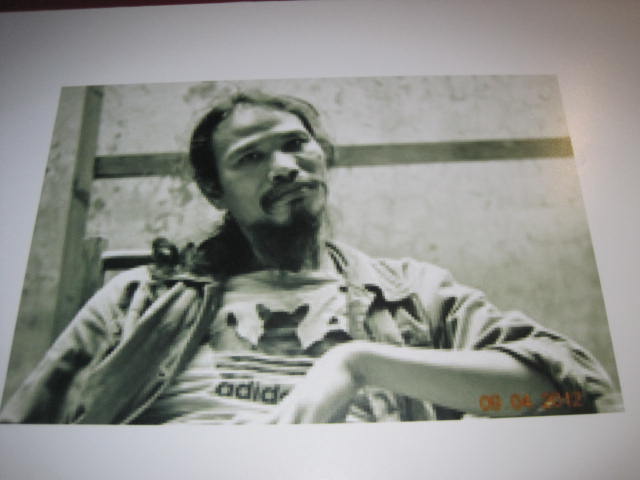
It’s always a satisfying feeling to start a solar new year on a high note so I’ll do just that by commenting on one of the best of the best of the best 2012 art works that leaves me feeling really positive about what may lie ahead for us on the local art scene in 2013
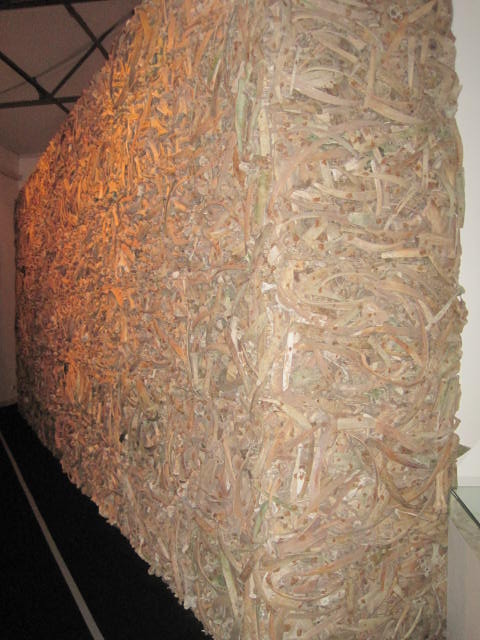
It’s been an interesting couple of weeks for me since Bopha Xiorgia-Le Huy Hoang’s large installation, ‘The Wall’ opened at Goethe. I’ve visited the construction of animal bones more than a few times to experience again the sense of drama that overcomes me as soon as I enter the dimly lit gallery, and then to sit with it and contemplate, and, inadvertently, to eavesdrop on comments made by viewers who managed to interrupt my thoughts as I huddled in a dark corner
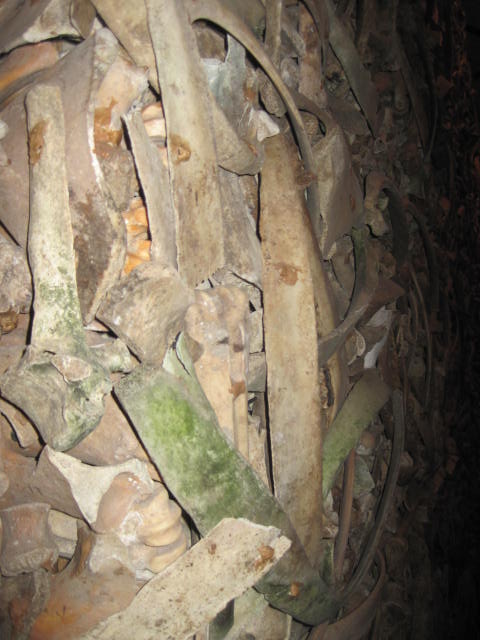
Most comments overheard (and also elicited) have been overwhelmingly positive, with a small proportion being negative. Such was the response to the same artist’s last large installation, ‘Rain’, which still gives me a warm glow of pleasure whenever I put it in my mind’s eye.
Some overheard comments linked viewers’ experiences with other bone walls and ossuaries ) such as the catacombs of Paris or Rome. Others turned their minds, sometimes close memories, sometimes emotively, to mass graves, atrocities, genocidal monstrosities, to the various Nazi death camps of world War 2, the Russian Gulags, the massacre of over 8 000 Bosnian males at Srebrenica in 1995, the 1994 Rwandan massacres, the famine levied on Vietnamese by Japanese forces in the 1940ies when about two million starved to death, the massacre at My Lai Others talked of walls built to enclose people and their memories like that built around the Jewish ghetto in Warsaw, the one that Israelis have erected to intimidate and restrict Palestinians, the Berlin Wall. Others commented about invisible ideological walls
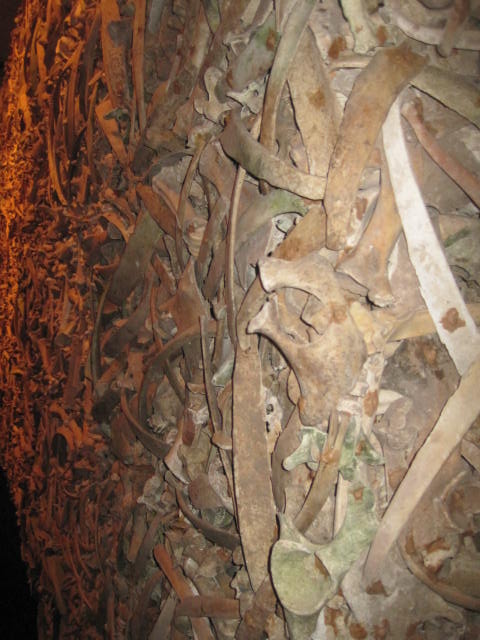
One viewer commented on the sense of movement of the bones in the wall, a rhythm of death! And, for me, it is this rhythm that adds to the structure’s intense beauty….for apart from its ominous overtones it is certainly a thing of beauty….like ‘The Scarf’ and ‘Rain’.
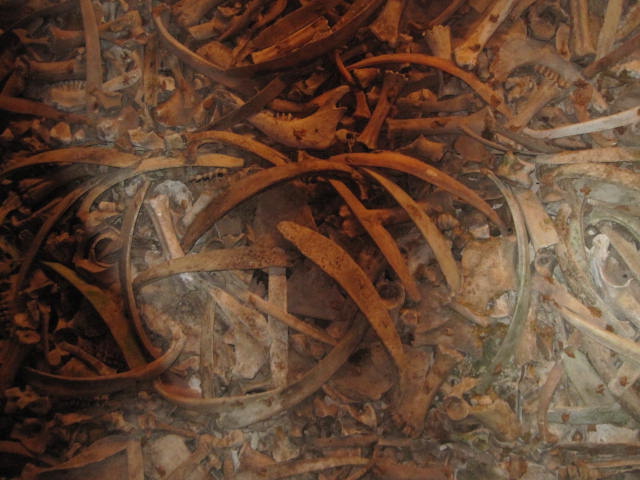
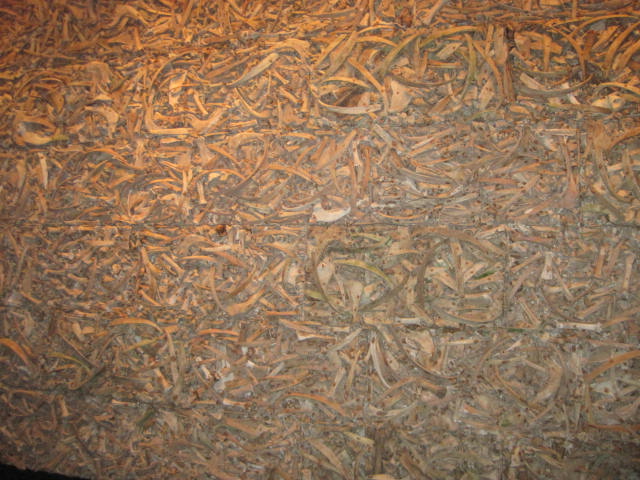
The narrow strip, four page photograph fold out from the exhibition’s information booklet highlights this almost macabre dance. (The info booklet also gives a brief but very pertinent artist’s statement about his Wall)
One viewer facetiously stated that it mist have taken an awful of Lau or Pho stock to get all those bones. But he was also one its biggest admirers. In my experience it is so often when we are most profoundly affected that we have to add a throw away line to curb an emotional response.
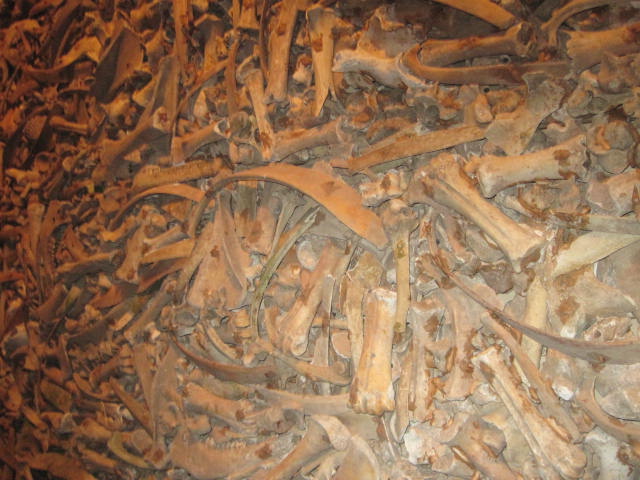
Some comment on the faint smell that pervades the gallery and a few relate it the perfume of long gone death
Way back in 2000 I was wandering the Cu Long streams and canals by small boats and from Chau Doc went to see the massacre site and memorial near the littlevillageofBa Chucnear the Cambodian border, commemorating the 3 157 Vietnamese killed there and in near by villages by marauding Kampuchean forces in 1978.

The hexagonal memorial was built in 1984 and houses 1700 skulls of the deceased according to sex and age and behind the skulls are heaped the bones of the victims.
It remains one of my most poignant reminders of the futility of war and its effect on the innocent and it was with Ba Chuc flooding back into my mind that I first came into contact with the wall at Goethe (luckily in a space as solitary and as quiet as that early summer morning 12 years ago)
For the artist it is the Khmer Rouge atrocities against their own people that has motivated much of his work. Rather than go into detail in this opinionated piece about the artist’s background, I’ll offer a link here to a 2009 article about Bopha Xiorgia Le Huy Hoang from the monthly magazine, ‘The Guide’. The biographical information given by the writer is general and sanitized and does not adequately cover his complex life story and background…which, one day, could make riveting reading or viewing in the hands of a sympathetic and non aligned author or film maker.
For a lot of us who are the artist’s fans and who were around a couple of years ago when he first conceived the idea that made the hair on the back of our necks rise in anticipation and who heard of the changes and modifications that were frequently imposed on it, we were thrilled when it was finally cemented in place and we saw our anticipations more than amply rewarded. We are really proud and pleased that the Danish Embassy saw the worth of the concept and gave funds to get it up and going (as it has done with so much worthwhile art in this country) and that the marvelous Goethe Institute was able to circumvent the to-ing and fro-ing that almost put a kibosh on the birth of a Wall that deserves to be shown in important art biennales, or at least given a permanent place in a museum devoted to lives viciously taken.
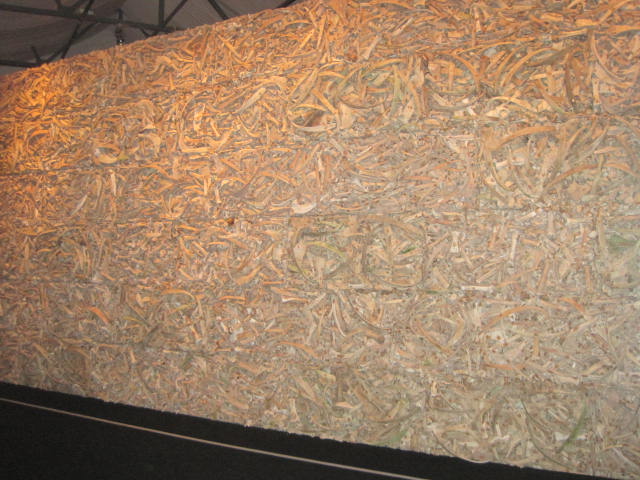
I am frequently asked to name the most outstanding pieces of art that I’ve seen since I started giving my opinions on The Grapevine in 2008 and Bopha Xiorgia-Le Huy Hoang’s Scarf, Rain and, now ,Wall all make my opinionated A list
My thanks to the artist for allowing me the privilege of experiencing this lovely art work….and again to the Danes and the Germans at Goethe. You all deserve an outstandingly excellent 2013
Aplogies for the quality of my images and also to those who’d rather a critcal overview.
![]()
| Kiem Van Tim is a keen observer of life in general and the Hanoi cultural scene in particular and offers some of these observations to the Grapevine. KVT insists that these observations and opinion pieces are not critical reviews. Please see our Comment Guidelines / Moderation Policy and add your thoughts in the comment field below. |

















…please do excuse the late note… I am obviously having a problem with this type of art and the way it is glorified as per examples below:
“…the sense of movement of the bones in the wall, a rhythm of death!”
…is it not exemplary of very distasteful, but much used shock value tactic in the media?
“…allowing me the privilege of experiencing this lovely art work….”
… considering that viewing this piece can not be a therapeutic/healing experience… why would anyone like to re-play the nightmare that it tries to represent…?
This art and the comments on it are called aestheticization of suffering.
ps …and I do not approuve of it.